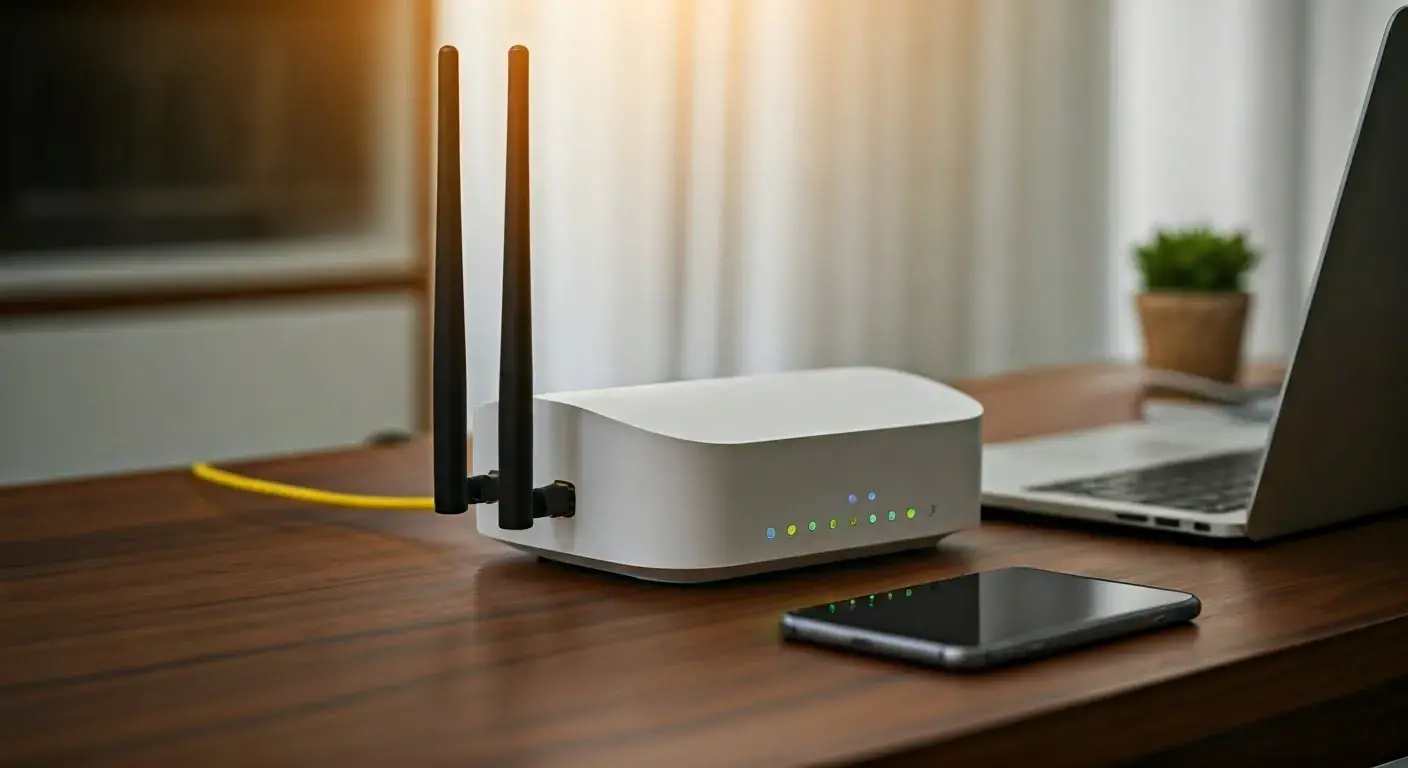Can someone track you if your phone is turned off?

Unveiling the Mystery: Can You Be Tracked When Your Phone is Off?
The question of whether your location can be tracked when your phone is ostensibly turned off is a pressing concern in our hyper-connected world. While the instinct is to believe that powering down your device renders you invisible, the reality is far more nuanced. This comprehensive guide delves into the intricate mechanisms of modern mobile technology, exposing the potential for tracking even when your screen is dark, and offering actionable strategies to safeguard your privacy.
Understanding How Phones Connect: The Foundation of Tracking
To grasp how tracking might occur when a phone is "off," we must first understand how it operates when it's on and connected. A smartphone is a sophisticated piece of technology designed to communicate constantly with various networks and services. This connectivity is the very basis for its ability to provide location data.
Cellular Networks: The Lifeline
Your mobile phone relies on cellular networks to make calls, send texts, and access data. When your phone is on, it actively communicates with nearby cell towers. The strength of the signal and the specific tower your phone connects to allow your carrier to determine your general location. This is a fundamental aspect of how mobile services function, enabling emergency calls and routing your communications. Even when you're not actively using your phone for calls or data, it periodically "pings" the network to maintain its connection and register its presence. This pinging mechanism is crucial for receiving incoming calls and messages.
GPS and Location Services: Pinpointing Your Position
Beyond cellular triangulation, smartphones are equipped with Global Positioning System (GPS) receivers. GPS satellites orbit the Earth, and your phone can receive signals from multiple satellites to calculate its precise latitude and longitude. This technology is the backbone of navigation apps and location-aware services. Furthermore, smartphones often utilize Assisted GPS (A-GPS), which combines GPS data with information from cellular towers and Wi-Fi networks to speed up location acquisition and improve accuracy, especially in areas with weak GPS signals. Location services on your phone aggregate data from GPS, Wi-Fi, and cellular networks to provide a comprehensive understanding of your whereabouts.
Wi-Fi and Bluetooth: Localized Tracking
Wi-Fi and Bluetooth are short-range wireless technologies that also contribute to location tracking. When your phone's Wi-Fi is enabled, it can detect and connect to available Wi-Fi networks. Companies and services can use the MAC addresses of these networks, along with their known locations, to infer your position. Similarly, Bluetooth allows your phone to communicate with nearby devices, such as smartwatches, headphones, or even Bluetooth beacons placed in retail stores or public spaces. These beacons can transmit unique identifiers that apps can use to track your presence and movement within a specific area.
App Permissions and Data Collection
Many applications on your smartphone request permission to access your location data. This is often done to provide features like location-based notifications, personalized advertising, or mapping services. Once granted, these apps can collect your location history, which can be stored on your device, on the app developer's servers, or shared with third-party data brokers. The extent of data collection varies widely depending on the app's privacy policy and the permissions you've granted.
The "Off Switch" Illusion: What Really Happens?
The common understanding of "turning off" a phone is that it completely severs all communication and processing. However, modern smartphones, especially those running advanced operating systems like iOS and Android, are designed to manage power and maintain essential functions even when the user believes the device is inactive. This leads to the "off switch illusion."
Simulated Shutdown: The Device's Trick
In many cases, when you press and hold the power button and select "Power Off" or "Shut Down," the phone doesn't perform a hard shutdown of all its components. Instead, it enters a low-power state that simulates being off to the user. Certain critical systems, such as those related to network connectivity or emergency services, might remain partially active or be capable of quickly reactivating. This is particularly true for newer devices designed to support features like "Find My" or emergency SOS, which need to function even if the battery is critically low or the device appears to be off. For instance, Apple's "Find My" network can locate an iPhone even when it's powered down, by leveraging Bluetooth signals from other Apple devices. This feature relies on a minimal power state that allows for intermittent Bluetooth broadcasting.
Background Processes and Network Pings
Even when the screen is off and you're not actively using apps, background processes continue to run. These can include system updates, background app refresh, and, crucially, periodic network pings. Your phone's modem might still be active enough to respond to network requests from your carrier. This allows the network to know that the device is still registered and potentially reachable. If the device is capable of sending out these pings, even infrequently, it's technically not entirely "off the grid" in terms of network presence. Some advanced malware or spyware could potentially manipulate these background processes to maintain a low-level communication channel.
Emergency Services and Location Transmission
A significant reason for the continued partial functionality of a "powered off" phone is the need to support emergency services. In many regions, regulations mandate that mobile phones can still make emergency calls (like 911 or 112) even when they appear to be off or have no active service plan. To facilitate this, the phone's cellular modem must remain in a state where it can initiate a connection to the nearest tower when an emergency number is dialed. This capability inherently means that the phone can still transmit its location to emergency responders. Furthermore, features like Advanced Mobile Location (AML) automatically send location data to emergency services when an emergency call is made, regardless of whether other location services are active.
Methods of Tracking When Your Phone is "Off"
Given the nuances of modern smartphone operation, several methods can potentially be used to track a device that is believed to be turned off. These methods leverage the residual connectivity or the device's inherent capabilities.
Cellular Tower Triangulation (Even When "Off")
As mentioned, if the phone's cellular modem is still capable of pinging the network or responding to emergency call requests, its presence can be detected by cellular towers. By analyzing the signal strength and timing from multiple towers, a general location can be determined. This is not as precise as GPS, but it can narrow down a user's whereabouts to a specific area, sometimes down to a few hundred meters in dense urban environments. Mobile Network Operators (MNOs) have access to this data and can provide it to law enforcement under specific legal conditions.
Wi-Fi Hotspot Tracking
If your phone's Wi-Fi scanner is still active in its low-power state, it might be able to detect nearby Wi-Fi networks. Services that maintain databases of Wi-Fi hotspots and their locations can use this information. If your device is within range of a known Wi-Fi network, its presence can be inferred. This is particularly relevant in public places with many Wi-Fi access points. While less common for tracking a "turned off" phone, it's a possibility if specific permissions were granted while the phone was active and the Wi-Fi scanning remains enabled in a low-power mode.
Bluetooth Beacons and Proximity Tracking
Bluetooth Low Energy (BLE) is designed for minimal power consumption. If your phone's Bluetooth remains active in a low-power state, it can detect and be detected by Bluetooth beacons. Retailers, venues, and even individuals can deploy these beacons. When your phone is within range, the beacon can identify your device's unique Bluetooth identifier. This can be used for proximity marketing or, in more concerning scenarios, for tracking your movements within a specific area. Apple's "Find My" network, for instance, relies on this principle, allowing even powered-down iPhones to be located by other nearby Apple devices broadcasting their Bluetooth signals.
Malware and Spyware: The Persistent Threat
The most sophisticated and concerning method of tracking involves the installation of malware or spyware on your device. If your phone is compromised, malicious software could be designed to simulate a shutdown to the user while maintaining a covert communication channel. This malware could periodically activate the phone's GPS, Wi-Fi, or cellular modem to send your location data to an attacker. These threats are often delivered through phishing links, malicious app downloads, or even exploiting vulnerabilities in the operating system. In 2025, the sophistication of mobile malware continues to evolve, making this a significant concern for privacy.
Emergency Calls and Location Sharing Features
As discussed, emergency calls are a critical function that can override a "shutdown" state. If an emergency call is made from your device, its location will be transmitted to emergency services. Furthermore, some devices and services have features that allow for automatic location sharing in emergencies. For example, if your phone detects a severe accident (like a car crash), it might automatically send your location to pre-designated contacts or emergency services, even if you are unresponsive.
IoT Devices and Connected Ecosystems
The proliferation of the Internet of Things (IoT) creates a broader ecosystem of connected devices. If your phone is linked to other smart devices – such as smartwatches, fitness trackers, smart home hubs, or even connected cars – these devices might continue to operate and potentially transmit location data. For instance, a connected car might log your location even if your phone is "off," if the car's system is still active and has a data connection. This interconnectedness means that tracking might not solely rely on the phone itself but on the broader network of devices it interacts with.
Who Can Track You, and Under What Circumstances?
Understanding who has the capability and the legal or technical means to track your phone, even when it's supposedly off, is crucial for assessing your risk.
Law Enforcement and Government Agencies
Law enforcement agencies, with proper legal authorization (such as a warrant or court order), can request location data from mobile network operators and device manufacturers. This data can include historical location information and, in some cases, real-time tracking. The ability to track a phone that appears to be off is often utilized in criminal investigations, missing person cases, or national security matters. The legal frameworks governing such access are designed to balance public safety with individual privacy rights.
Mobile Network Operators (MNOs)
Your mobile carrier inherently has access to your phone's location data through its network infrastructure. They know which cell towers your phone is connected to. This information is vital for providing service and is also used for network management. MNOs can provide this data to law enforcement with a legal request. They also collect anonymized location data for marketing and network planning purposes.
App Developers and Data Brokers
If you have granted location permissions to apps, these developers can collect and store your location data. Many apps then sell this aggregated, often anonymized, data to third-party data brokers. These brokers compile vast databases of consumer information, including location history, which can be used for targeted advertising, market research, and other purposes. While they may not be directly tracking your "off" phone, the data they possess is a consequence of your phone's active use and permissions granted.
Private Investigators and Malicious Actors
In less legitimate circumstances, private investigators might be hired to track individuals. They could potentially use specialized software or exploit vulnerabilities to gain access to location data. Malicious actors, including stalkers or individuals seeking to harm others, might attempt to compromise a phone with spyware. These actors often operate outside legal boundaries, making them a significant privacy threat. The ability to track a phone that appears to be off is a highly sought-after capability for those with nefarious intentions.
Enhancing Your Privacy: Mitigation Strategies
While complete invisibility is challenging in the digital age, several proactive steps can significantly reduce the likelihood of being tracked when your phone is off.
Disabling Location Services and Permissions
The most straightforward step is to disable location services entirely in your phone's settings. For both Android and iOS, you can find this under privacy settings. Additionally, review the location permissions for each app. Grant location access only when necessary and consider setting permissions to "While Using the App" or "Ask Next Time" instead of "Always."
Managing App Permissions Diligently
Regularly audit the permissions granted to all your installed applications. Remove permissions that are not essential for the app's functionality. Be particularly cautious with apps that request access to location, microphone, or camera.
Turning Off Wi-Fi and Bluetooth
When you want to ensure maximum privacy, manually turn off Wi-Fi and Bluetooth from your device's quick settings or main settings menu. While some modern phones have smart features that may re-enable these for specific purposes, a manual deactivation is more robust.
Using a Virtual Private Network (VPN)
While a VPN primarily encrypts your internet traffic and masks your IP address when your phone is online, it can also help prevent some forms of tracking by obfuscating your online identity. When your phone is "off," a VPN offers no direct protection, but it's a crucial tool for online privacy when your device is active.
Physical Disconnection and Faraday Bags
For absolute certainty that your phone is not communicating, the most effective method is physical disconnection. This means removing the battery (if possible on older models), but more practically, using a Faraday bag. A Faraday bag is a pouch lined with conductive material that blocks all electromagnetic signals, effectively rendering your phone undetectable by any wireless means. This is the only guaranteed way to ensure no tracking occurs via wireless signals.
Software Updates and Security Best Practices
Keep your phone's operating system and all applications updated to the latest versions. Software updates often include security patches that fix vulnerabilities that could be exploited by malware. Use strong, unique passwords, enable two-factor authentication, and be wary of suspicious links or downloads.
Legal and Ethical Considerations in Tracking
The ability to track individuals, especially when their devices are "off," raises significant legal and ethical questions. In most democratic societies, tracking a person's location without their consent or without legal authorization is a violation of privacy. Laws such as the GDPR in Europe and various state-level privacy laws in the United States aim to protect individuals from unwarranted surveillance.
Law enforcement tracking is typically governed by strict legal procedures, requiring probable cause and judicial oversight. The use of advanced tracking technologies, including those that can operate when a device appears to be off, must adhere to these legal frameworks. The ethical debate centers on the balance between individual privacy and the needs of public safety, national security, and crime prevention. The increasing sophistication of tracking technologies necessitates ongoing legal and ethical discussions to ensure that these tools are used responsibly and do not lead to a surveillance state. The 2025 landscape continues to see these debates evolve, with new technologies constantly challenging existing regulations.
Conclusion: Navigating Privacy in the Digital Age
In conclusion, the notion that turning off your phone renders you untraceable is largely a misconception in 2025. While a full shutdown might disable many active functions, residual power states, emergency service protocols, and sophisticated malware can still allow for location tracking. Cellular tower pings, Bluetooth beacon detection, and the persistent threat of spyware are all mechanisms that can compromise your perceived invisibility.
Understanding these vulnerabilities is the first step toward reclaiming your digital privacy. By diligently managing app permissions, disabling unnecessary wireless functions, and, for ultimate security, utilizing physical shielding like Faraday bags, you can significantly mitigate tracking risks. Law enforcement and legitimate entities operate under legal frameworks, but the potential for misuse by malicious actors remains a concern. Therefore, a proactive and informed approach to your device's settings and security is paramount. Prioritizing your privacy empowers you to navigate the complexities of our interconnected world with greater confidence and control.





